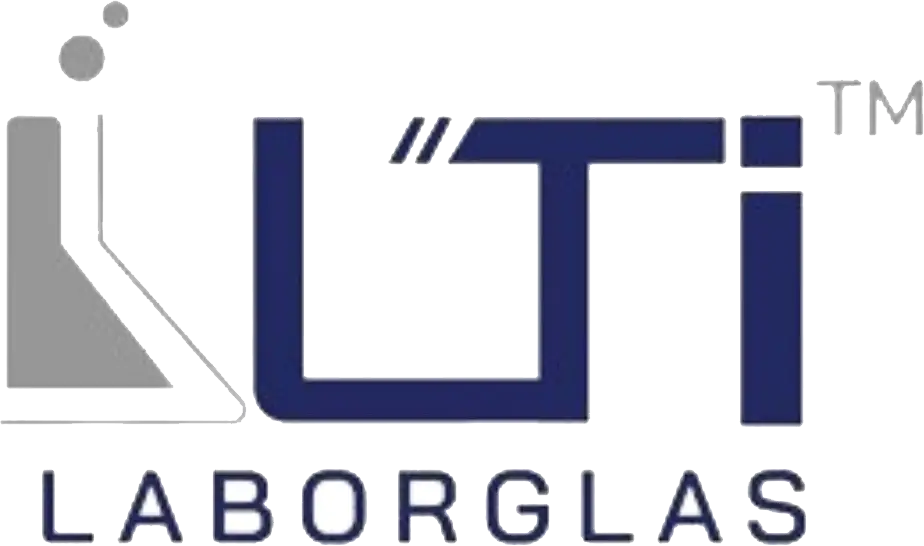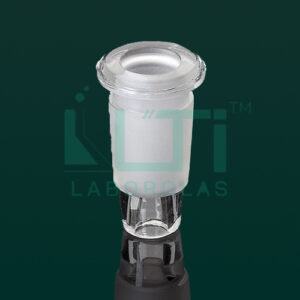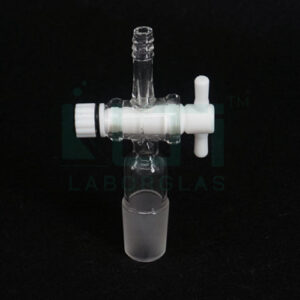Acc. to DIN 12249
| Part No. | Socket Size | Approx. O.D. OF TUBE | Total length APPROX. (mm) | Pack (qty.) |
| 1250-12S | 12/21 | 16 | 120±10 | 10 |
| 1250-14S | 14/23 | 18 | 120±10 | 10 |
| 1250-19S | 19/26 | 22 | 125±10 | 10 |
| 1250-24S | 24/29 | 28 | 135±10 | 10 |
| 1250-29S | 29/32 | 32 | 135±10 | 10 |
| 1250-34S | 34/35 | 38 | 150±10 | 10 |
| 1250-40S | 40/38 | 45 | 150±10 | 10 |
| 1250-45S | 45/40 | 50 | 150±10 | 10 |
| 1250-50S | 50/42 | 55 | 150±10 | 10 |
Here are some common uses of glass joints in a laboratory setting:
- Glass Distillation Apparatus:
- Distillation setups often use glass joints to connect different components like the boiling flask, condenser, and receiving flask.
- Reaction Vessels:
- Glass joints are used in assembling reaction vessels for chemical reactions. This allows for easy assembly and disassembly of the apparatus.
- Chromatography Columns:
- Chromatography columns may have glass joints to connect various sections of the column, allowing for easy packing and unpacking.
- Vacuum Systems:
- Glass joints are often used in vacuum systems, where airtight connections are crucial for maintaining the vacuum.
- Condensers and Reflux Systems:
- Glass joints are commonly used in condenser setups for reflux reactions, allowing for the efficient condensation and return of vapors to the reaction vessel.
- Laboratory Glassware Assembly:
- Glass joints enable the assembly of various pieces of laboratory glassware, facilitating the creation of customized setups for specific experiments.
- Jointed Glassware for Education:
- Glass joints are frequently used in educational laboratory settings where students learn about assembling different types of glassware for specific experiments.





